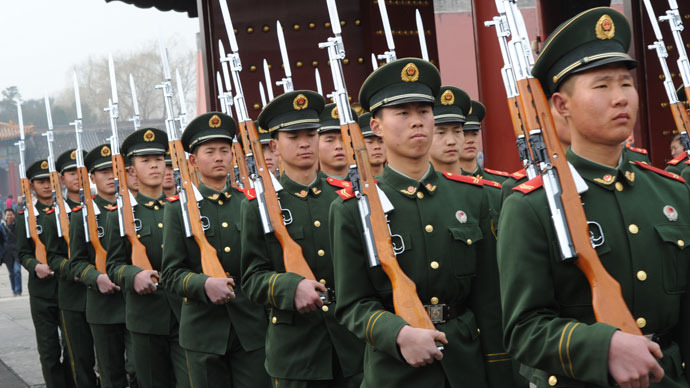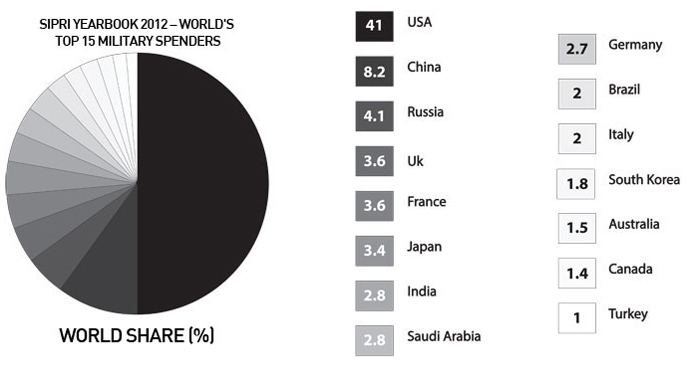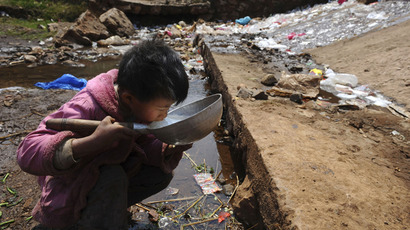‘Accidental wars’ feared as Asia engages in new arms race

Asian nations are racing to bolster their militaries amid rising regional tensions. While their defense budgets are still nowhere near that of the US, a lack of conflict-prevention mechanisms could cause unintended conflicts, a think tank has said.
East Asian militaries do not appear to be affected by the global economic slowdown, which goes against the worldwide trend of cuts to defense spending. In 2012, Asia overtook European members of NATO in terms of nominal military spending for the first time, according to a report by the UK-based International Institute for Strategic Studies (IISS).
However, this is more a result of European austerity than Asia spending more. Last year, European members of the US-led NATO military alliance allocated around 11 percent less money on defense than they did in 2006, the think tank said in its annual overview of the global military. Similar cuts have been conducted across the Atlantic, though even with its slimmer budget, the US Military still spends more than the 14 next nations combined, or more than 45 percent of global total.
Asian countries spent almost 5 percent more on defense in 2013 than they did the previous year. Spearheading this buildup is China, which announced a 10.7 percent hike in official military spending last week. Beijing spends more on its military than South Korea, Tokyo and Taiwan combined. If additional elements – widely believed to be omitted from official statistics – are accounted for, China could rival the US in base defense spending within the next decade, the IISS forecasted.

Over the last year, Beijing demonstrated several military achievements, including the commissioning of its first aircraft carrier and the first at-sea landing of its J-15 aircraft. The People’s Liberation Army is apparently focusing on boosting its naval capabilities: China will soon complete a new destroyer capable of operate across oceans, new modular corvettes and a new maritime patrol aircraft.
Other nations in the region have followed suit, acquiring arms they previously had not deployed, including anti-ship missiles, new submarines, advanced combat aircraft and cruise missiles.
“A number of countries have embarked on acquisition programs that will in time provide them with genuinely new capacities previously the preserve of Western powers and Russia. The nature and quality of submarine proliferation in Asia is a case in point,” the IISS said.
The think tank warned that Asia has a number of unresolved conflicts brewing, from territorial claims in the East China Sea to tensions between India and Pakistan to the unending standoff between North and South Korea.

In a region “lacking security mechanisms that could defuse crises” and “often only embryonic” bilateral military-to-military ties, this buildup carries “a tangible risk of accidental conflict and escalation, particularly in the absence of a strong tradition of military confidence-building measures,” the organization said.
Meanwhile the US ‘pivot’ to Asia, which might stimulate regional players to boost military spending, is so far more of a matter of declarations than of military redeployments, the IISS said. It is also unclear whether Washington’s NATO partners in Europe will be able credibly to go along with the plan.
The alliance is struggling to structurally transform into a smaller, but more capable military force, with various members specializing in different fields. But this ‘smart defense’ initiative has had limited progress, with individual nations concerned about the loss of sovereignty and jobs from the reform.
At the same time, there were clear shortcomings in Europe’s military capability, as demonstrated by the bombing campaign in Libya in 2011, and more recently in the Mali intervention, in which the US played a limited role. European members of NATO are underperforming in such areas as airborne refueling, airlifts and reconnaissance, and are forced to rely on US operational support.















